“Her work feels like a conversation between presence and disappearance.”
Rooted Elsewhere, Growing Here
A quiet pulse runs through Seung-yeon Jung’s work, the kind that hums beneath encounters, between people who share a room but not a language.
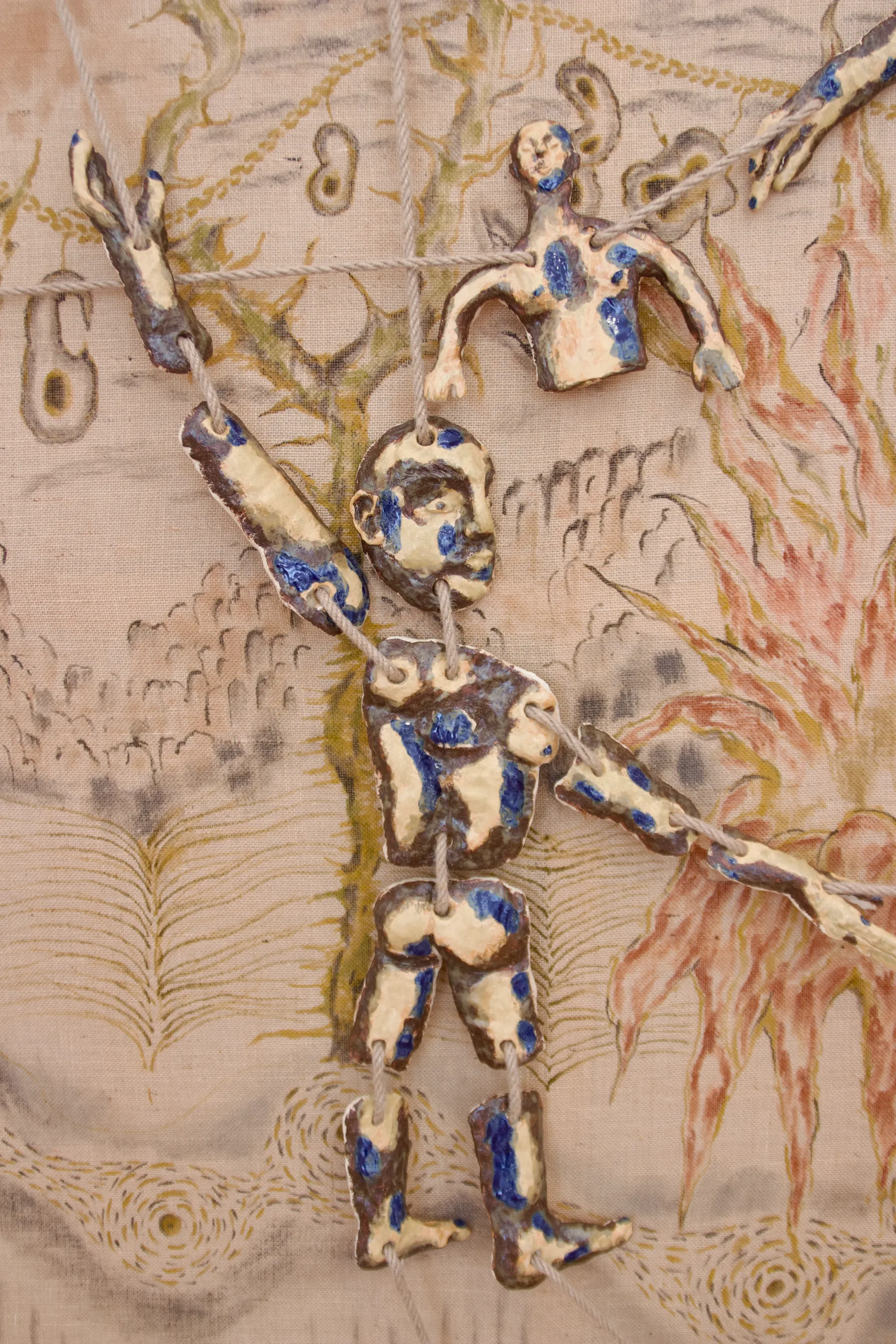
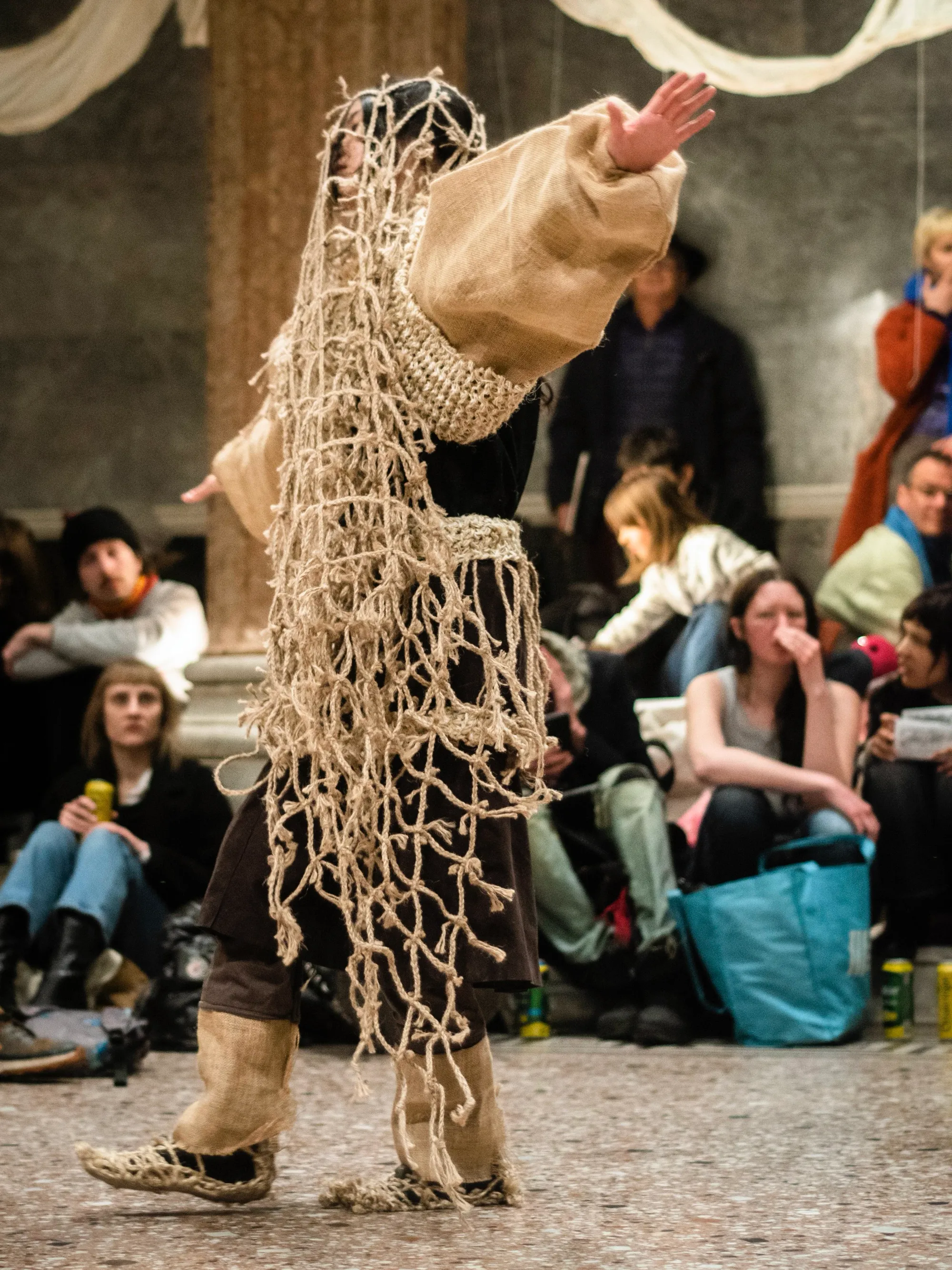
Seung-yeon Jung: installation and performance views exploring rhythm, gesture, and the dialogue between body and material. Phot on the right from 2wave of janggu. Photo by Rosa Knecht. Images courtesy of the artist.
Her paintings and installations are not declarations but negotiations: traces of coexistence, attempts to understand what it means to inhabit space with others while carrying a life shaped elsewhere.
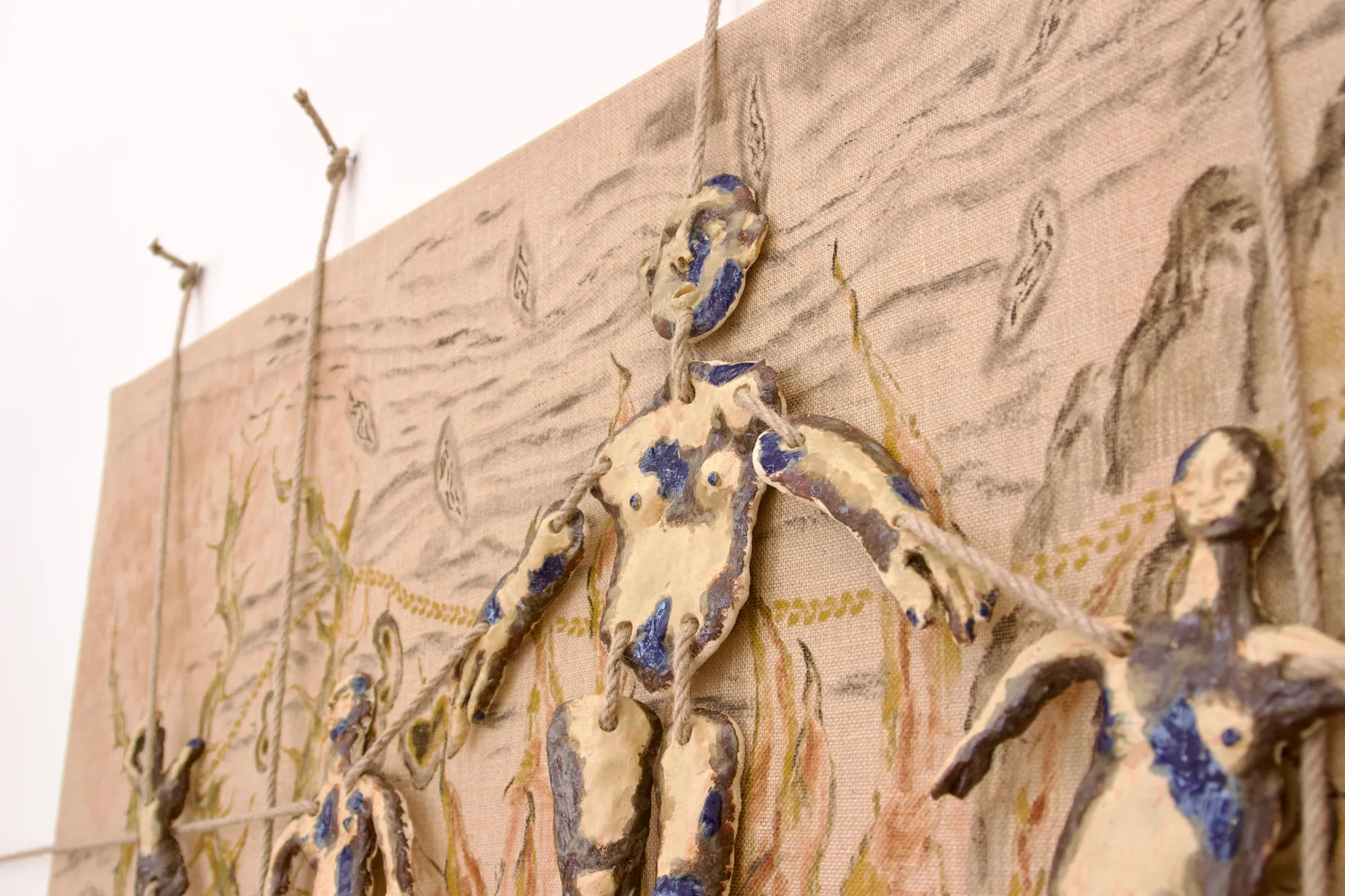
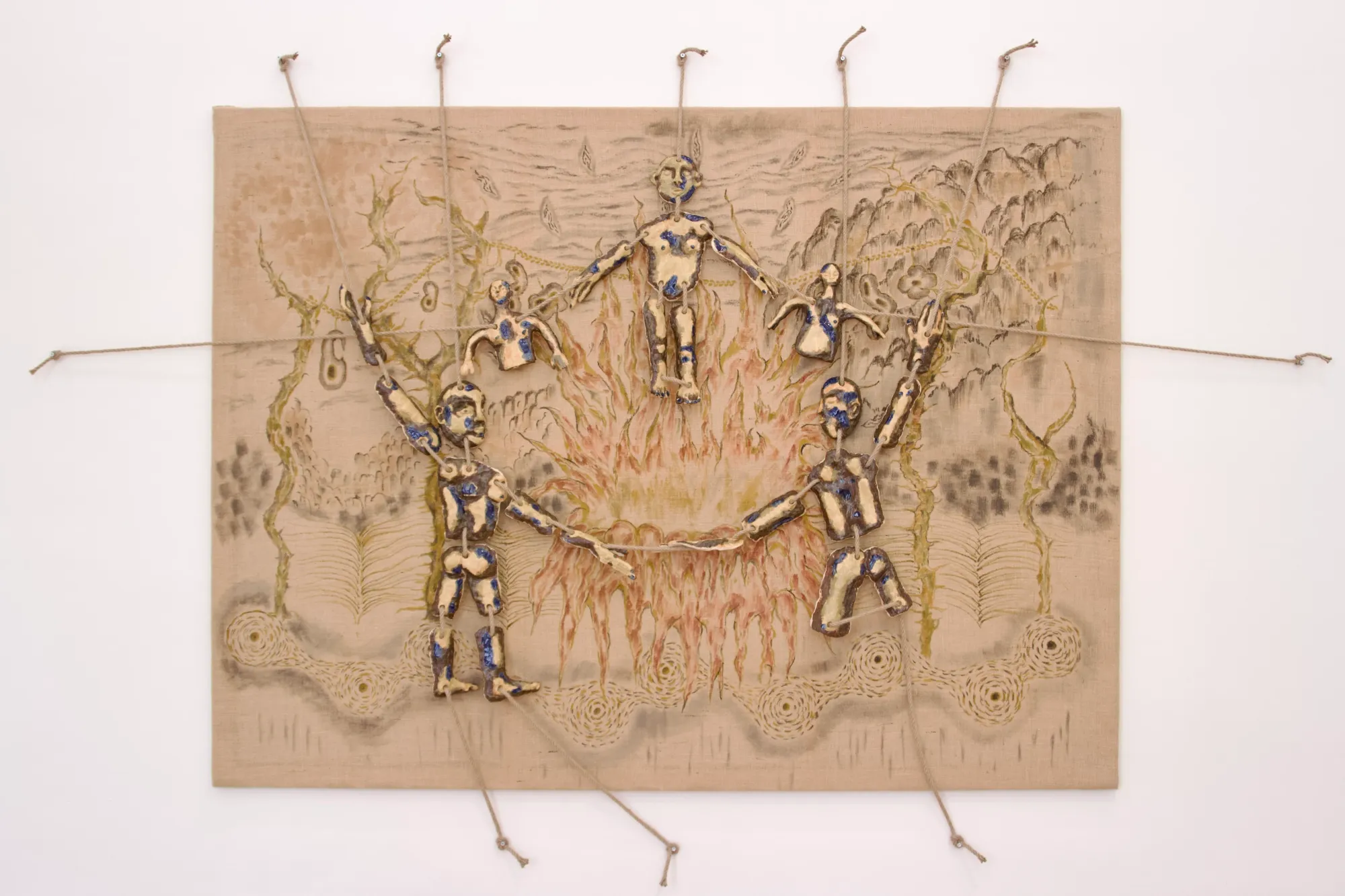
Born in Korea and now based in Vienna, Jung began her artistic path in Berlin in 2016, later studying at HBKsaar in Saarbrücken before joining the Academy of Fine Arts Vienna.
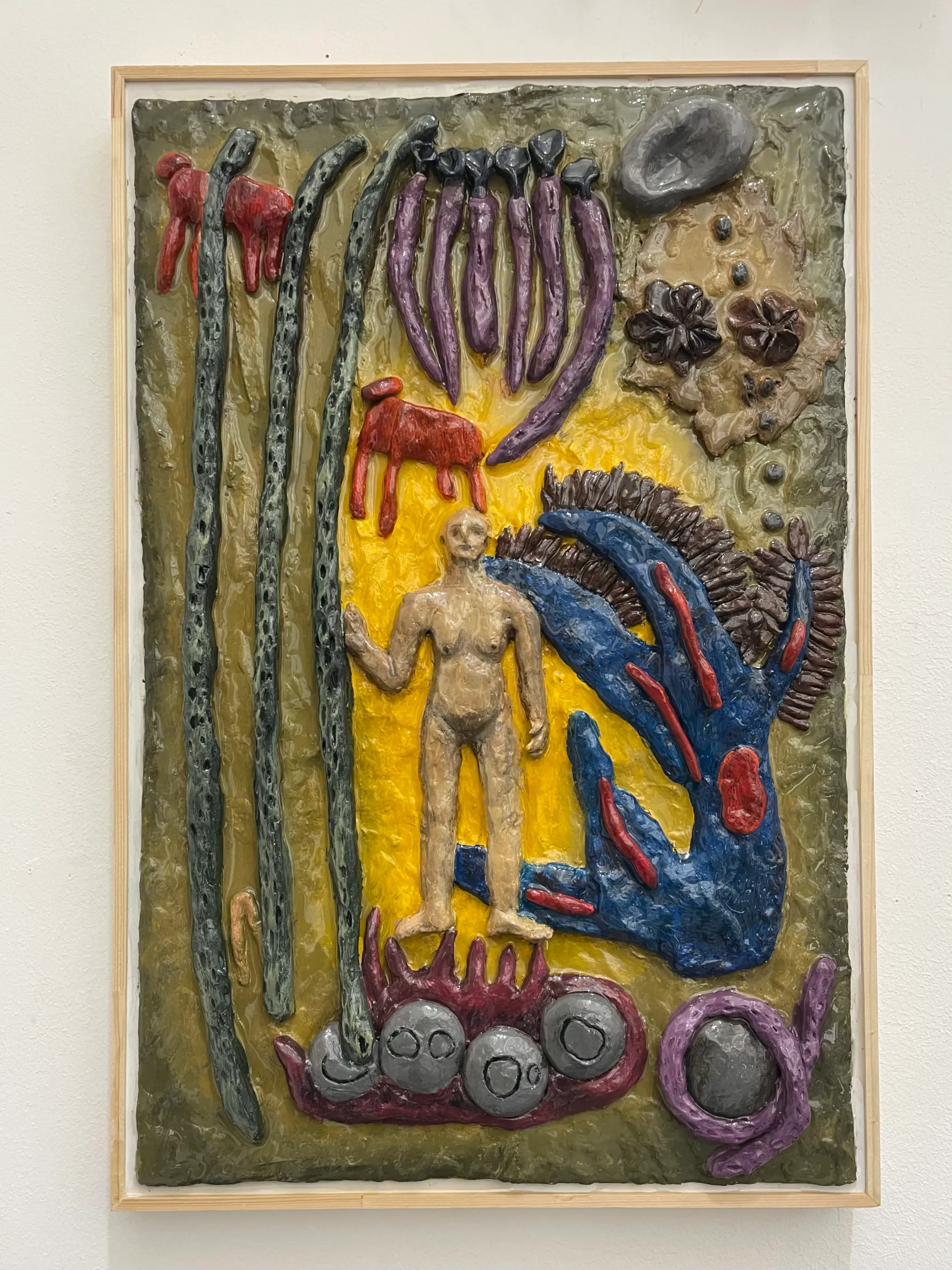
The dislocation of those years, new cities, new codes of behavior, new forms of distance, still echoes in her practice.
Every canvas and performance registers that subtle friction between self and surrounding.
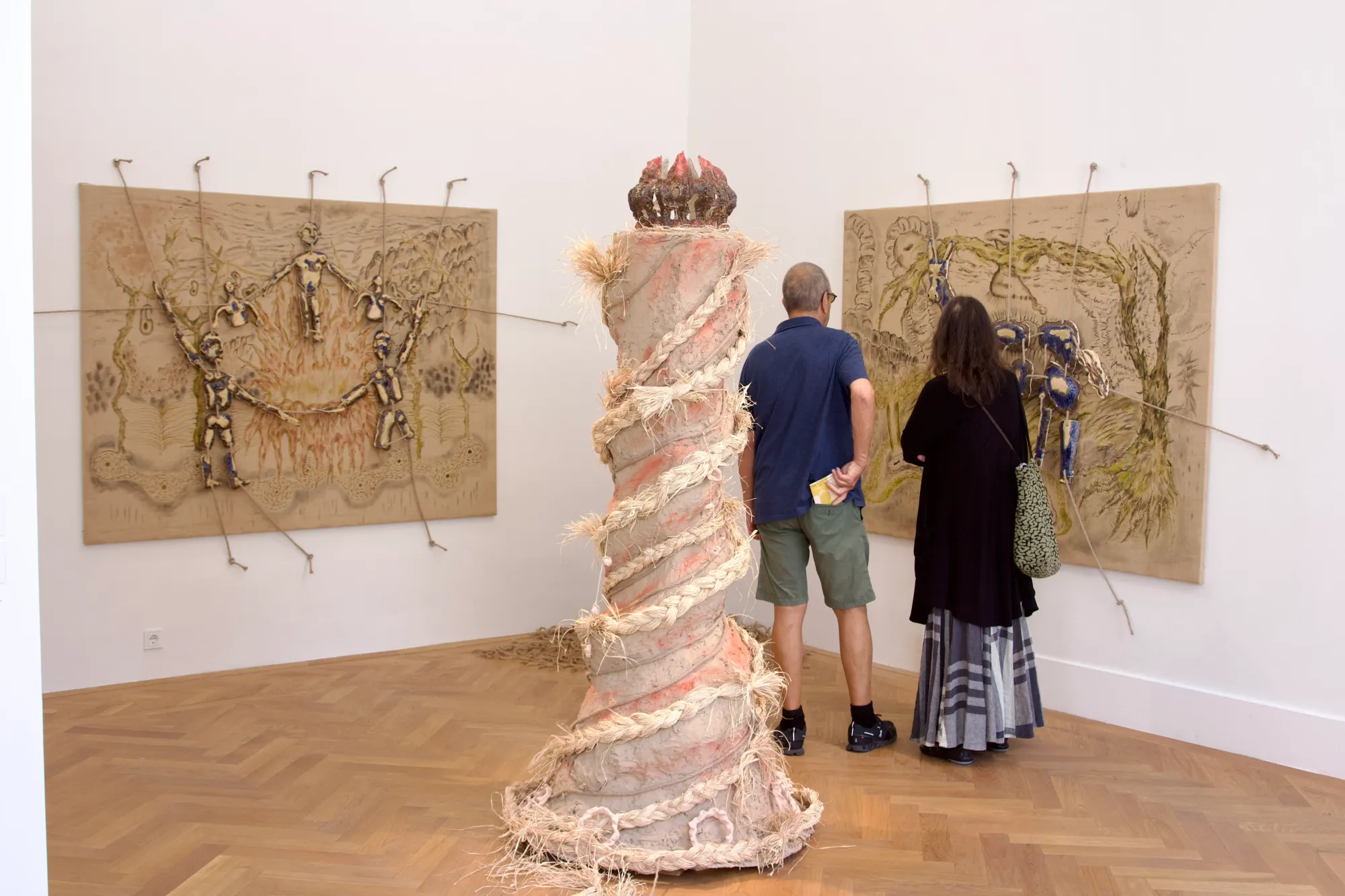
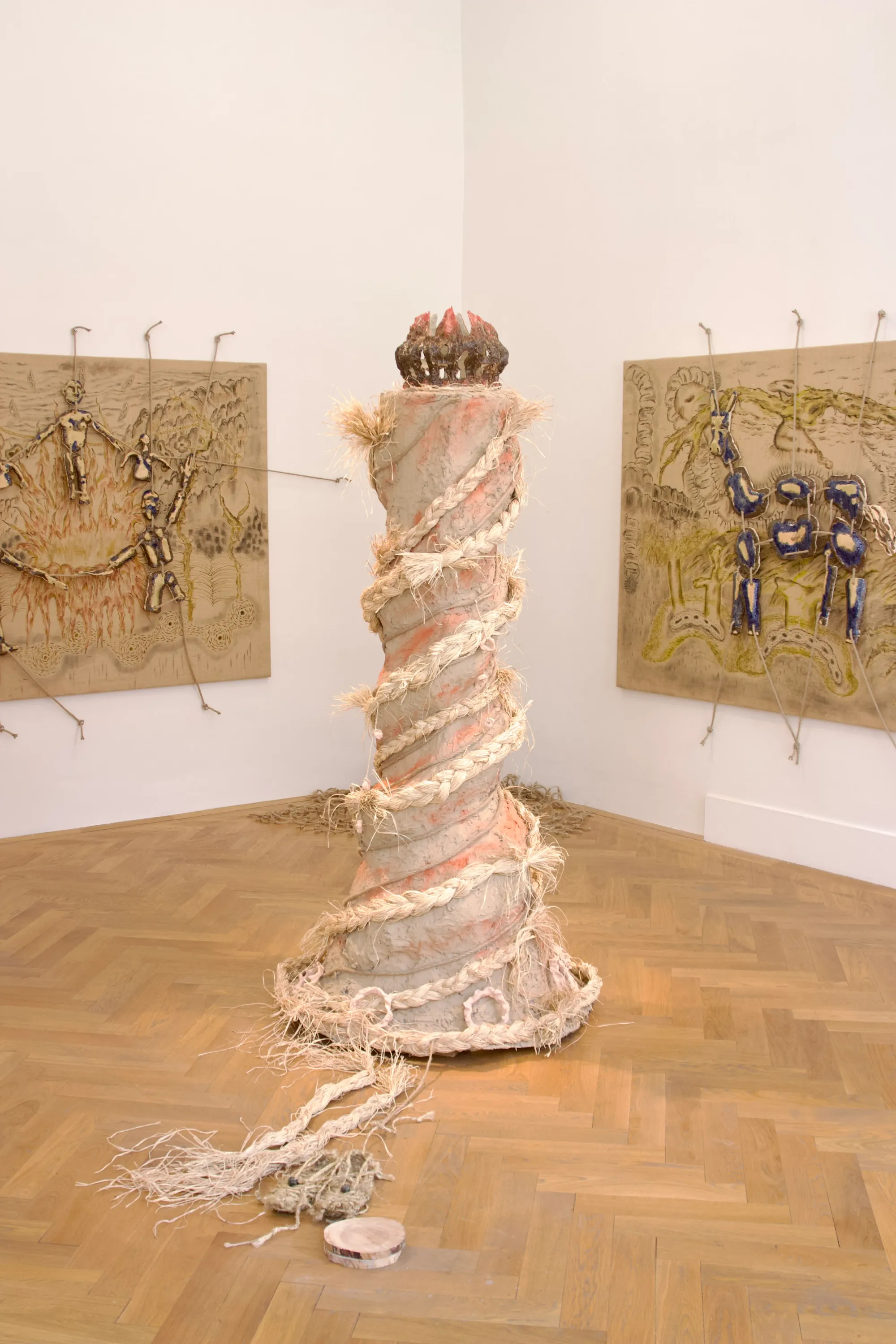
Ecology of Belonging
What drives Jung’s practice is not biography as confession but biography as ecosystem.
Her works emerge from moments of observation: how people stand next to each other, how walls divide, how proximity becomes both comfort and constraint.
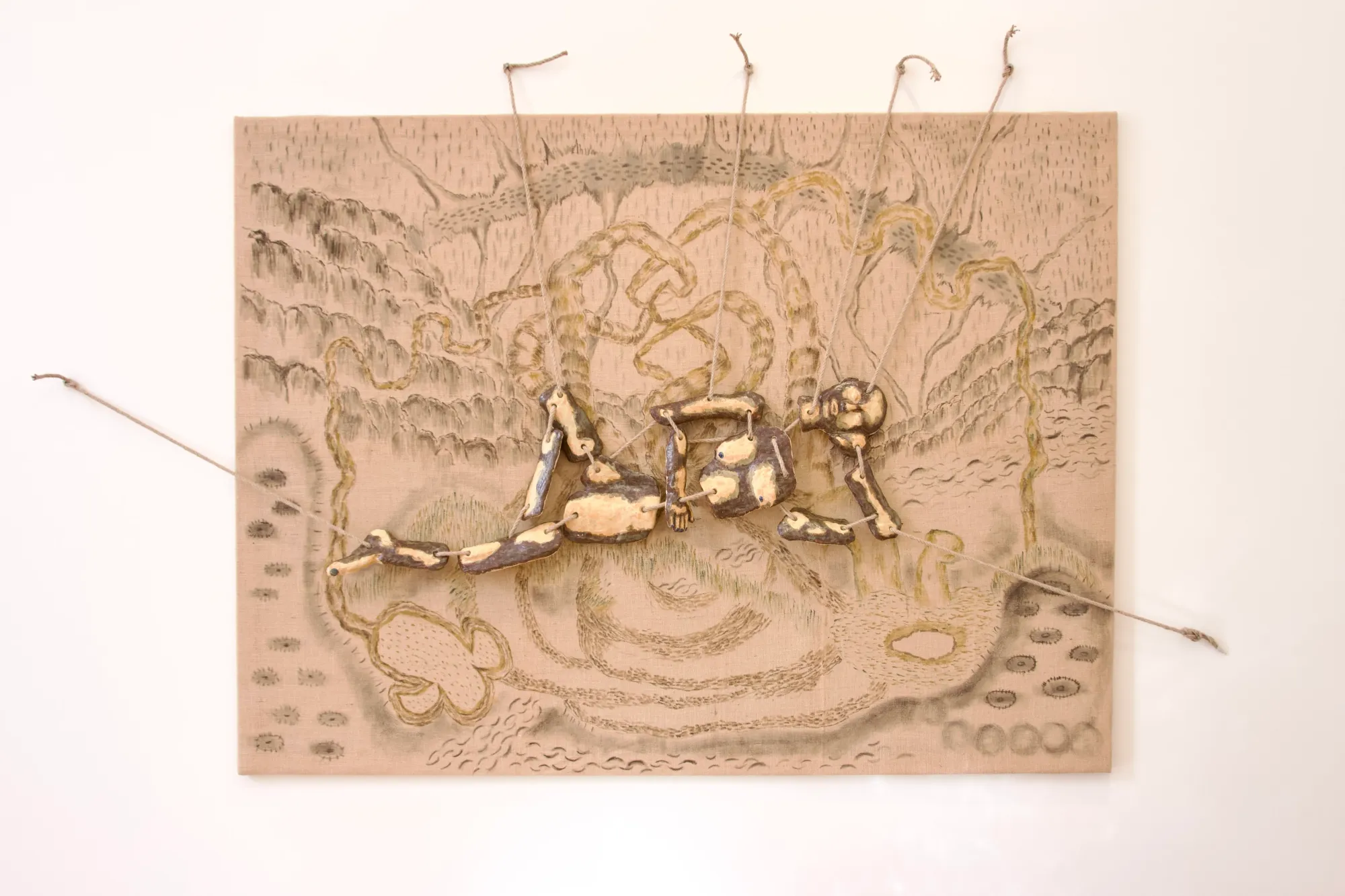
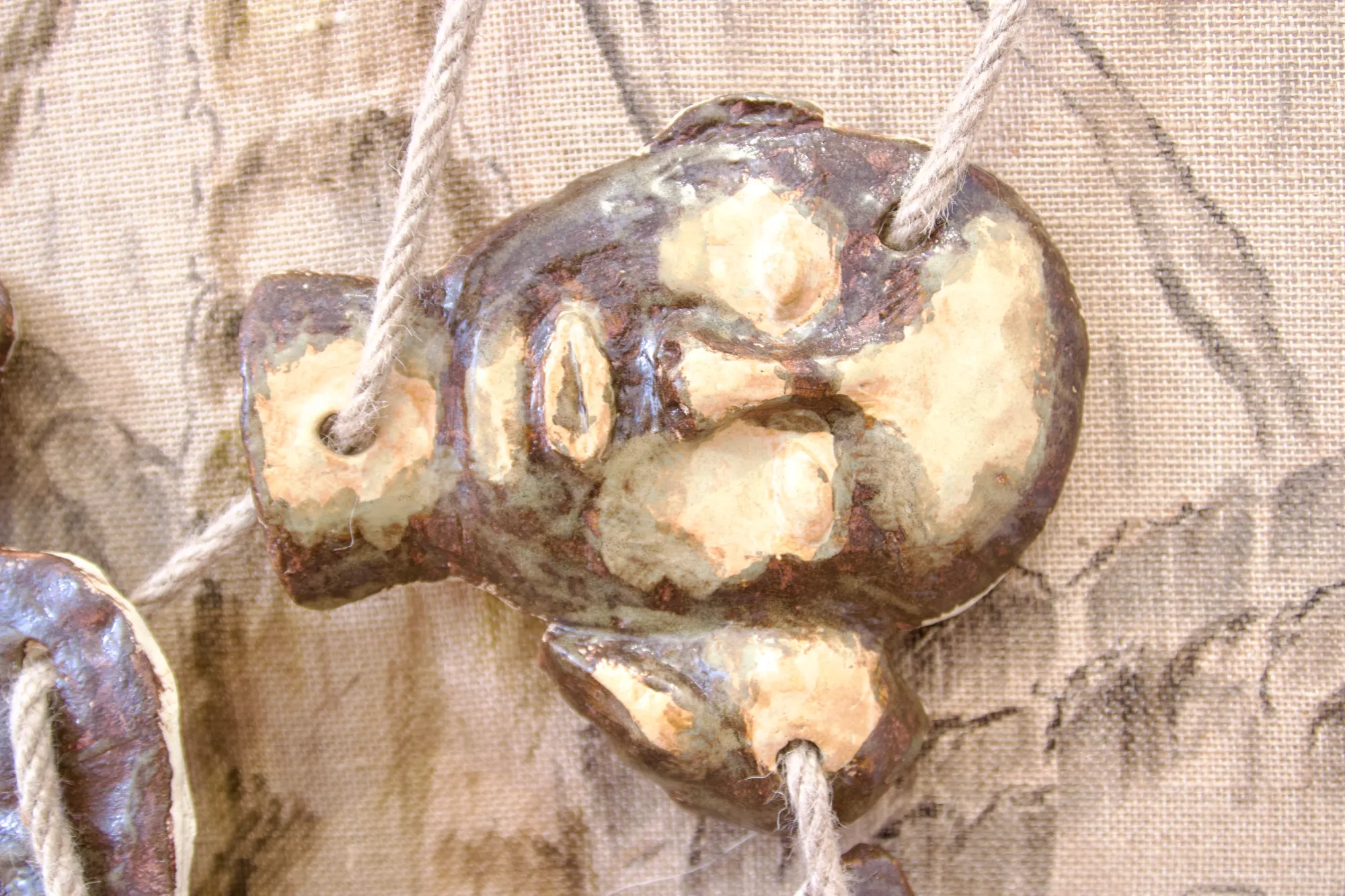
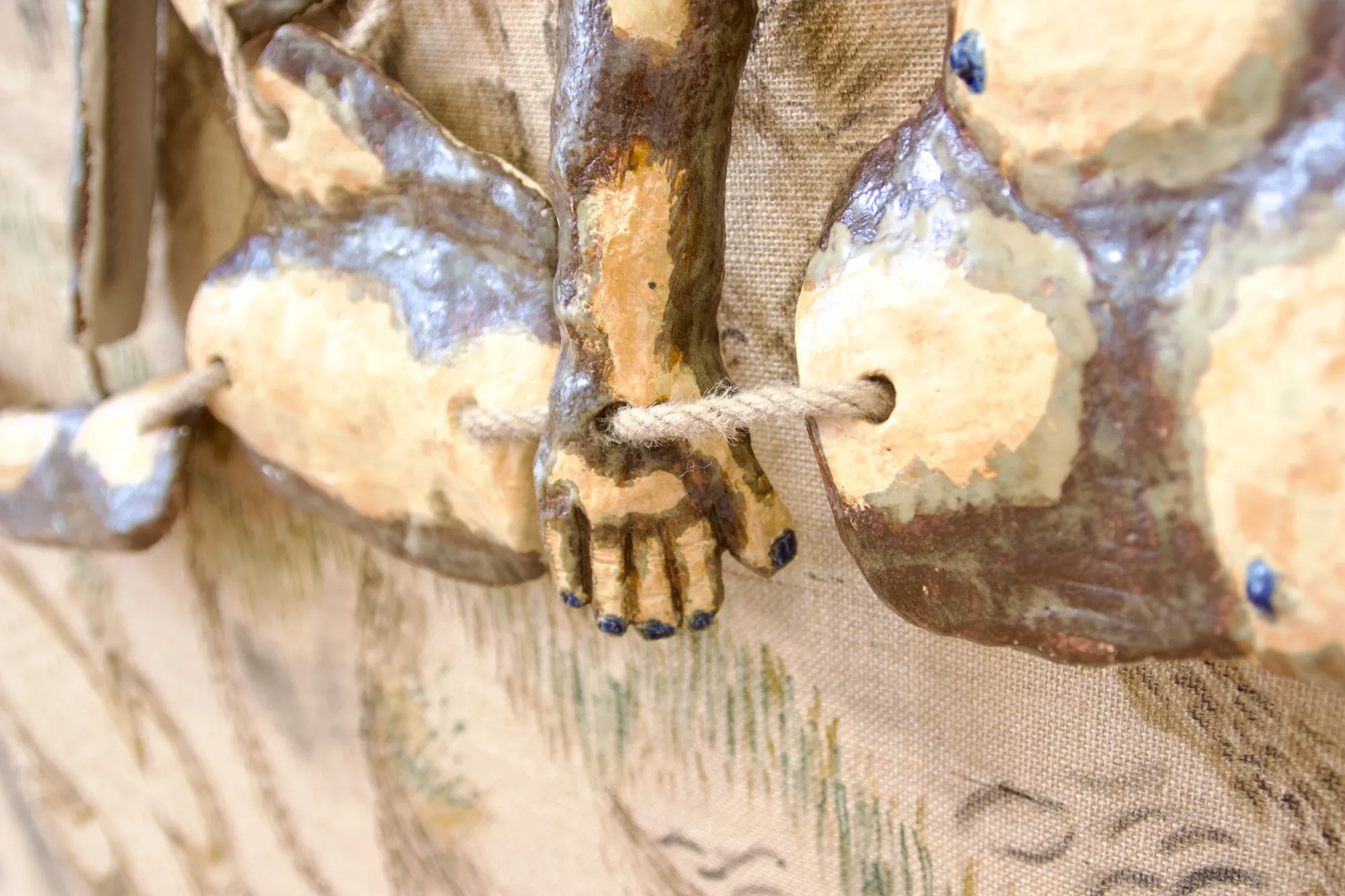
Seung-yeon Jung: details of When It Finally Becomes Still, 2025. Ceramics, jute rope, and ink on jute fabric. Exhibited in The Harmony in a Book Left Unread, Graduation Exhibition. Images courtesy of the artist.
From these small dynamics she builds fragile ecologies, rooms of painted gestures and performative acts that test how identity expands or dissolves when exposed to others.
The work moves between alienation and reconciliation, as if to ask whether belonging can exist without losing part of oneself.
It is this continuous movement that gives her art its pulse, a breathing rhythm of approach and retreat.
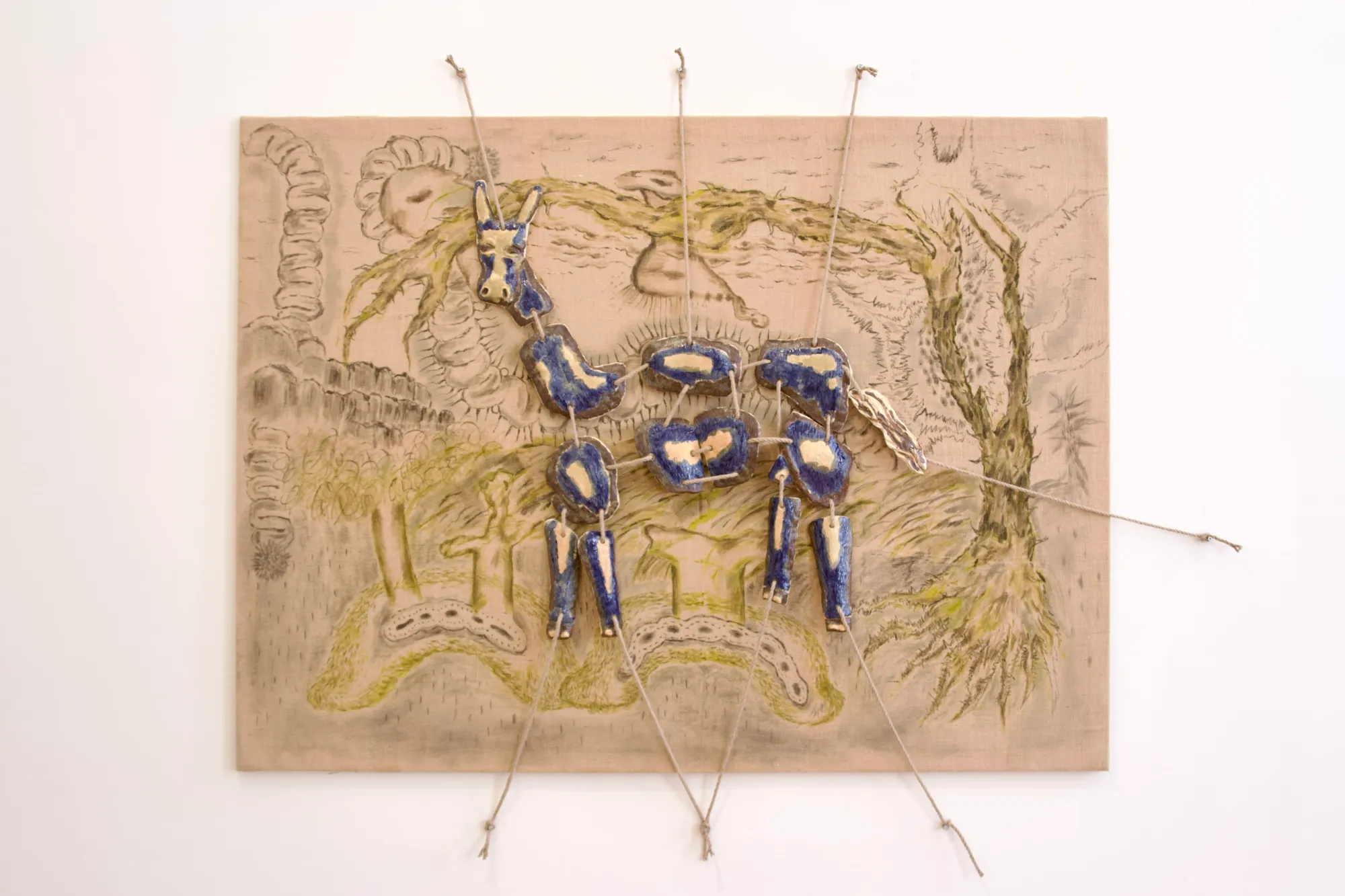
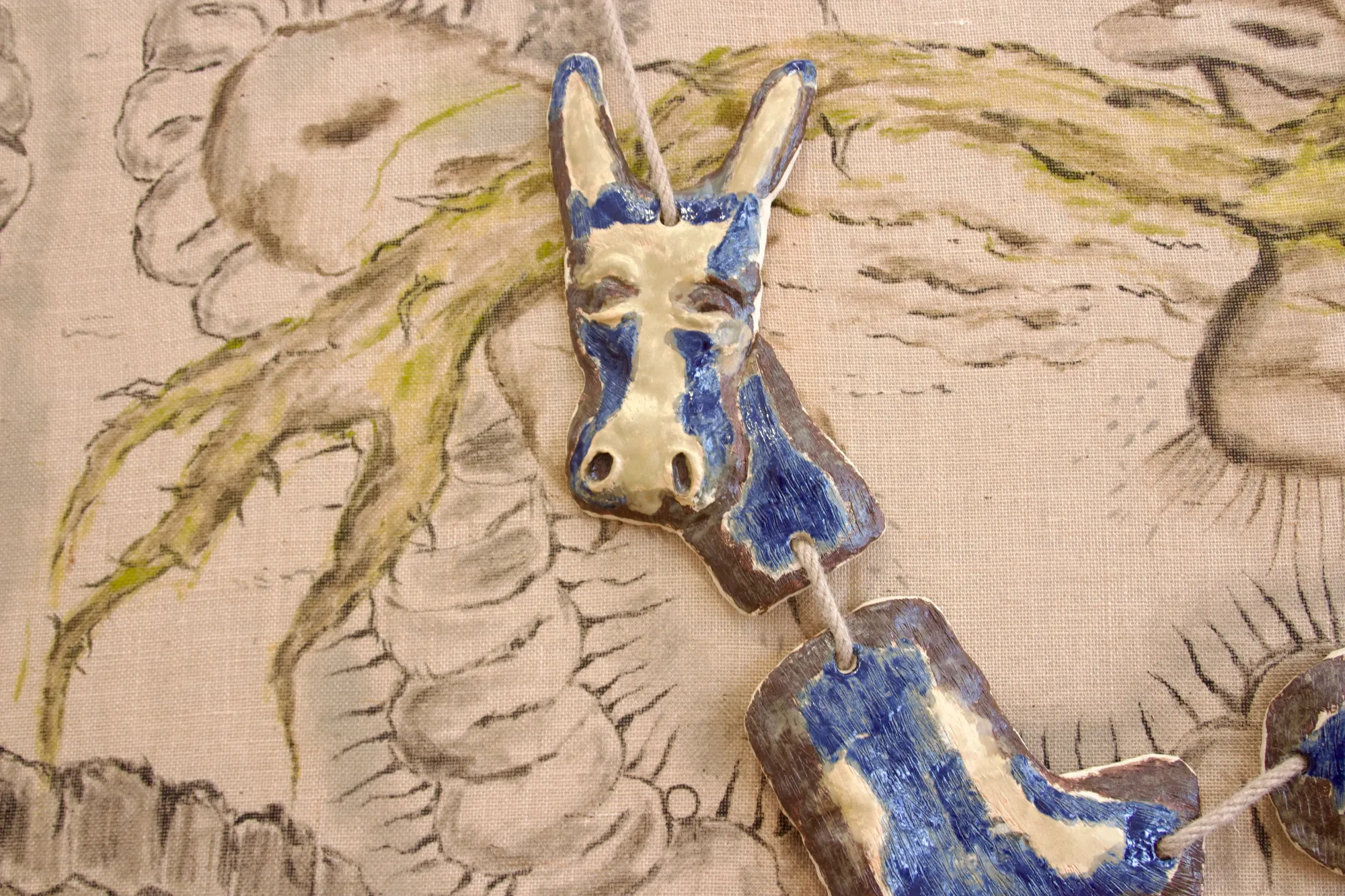
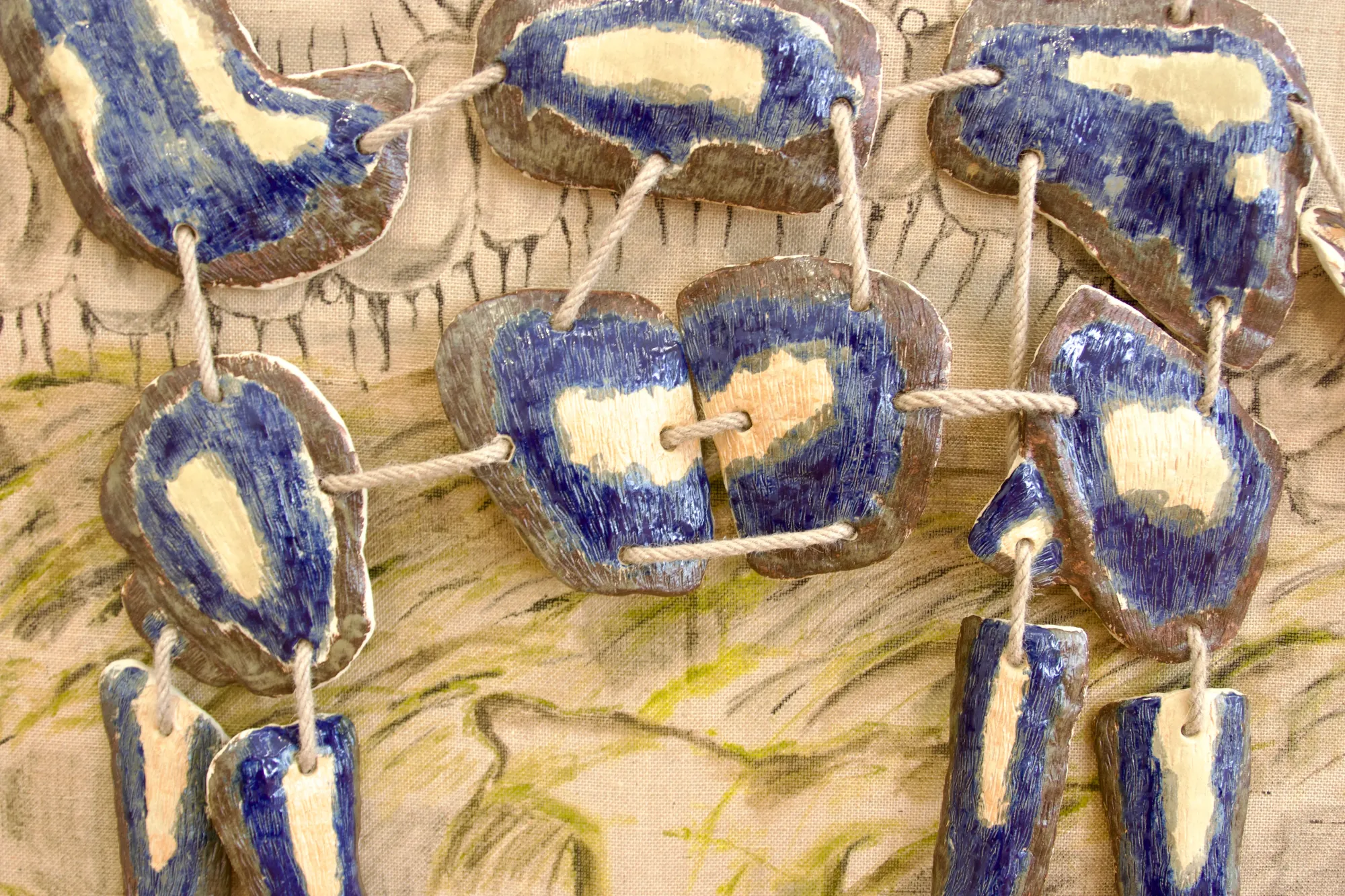
Seung-yeon Jung: details from the diploma project The Harmony in a Book Left Unread, 2025. Ceramics, jute rope, and ink on jute fabric. Exhibited at Exhibit Galerie, Schillerplatz 3, Vienna. Images courtesy of the artist.
Translation as Material
Painting becomes an act of translation, experience into texture, emotion into structure. Her installations and performances often merge: fabrics that remember the body, pigments that seep like memory.
The material vocabulary feels intuitive yet deliberate, as if she is rebuilding her own history through color, gesture, and residue.
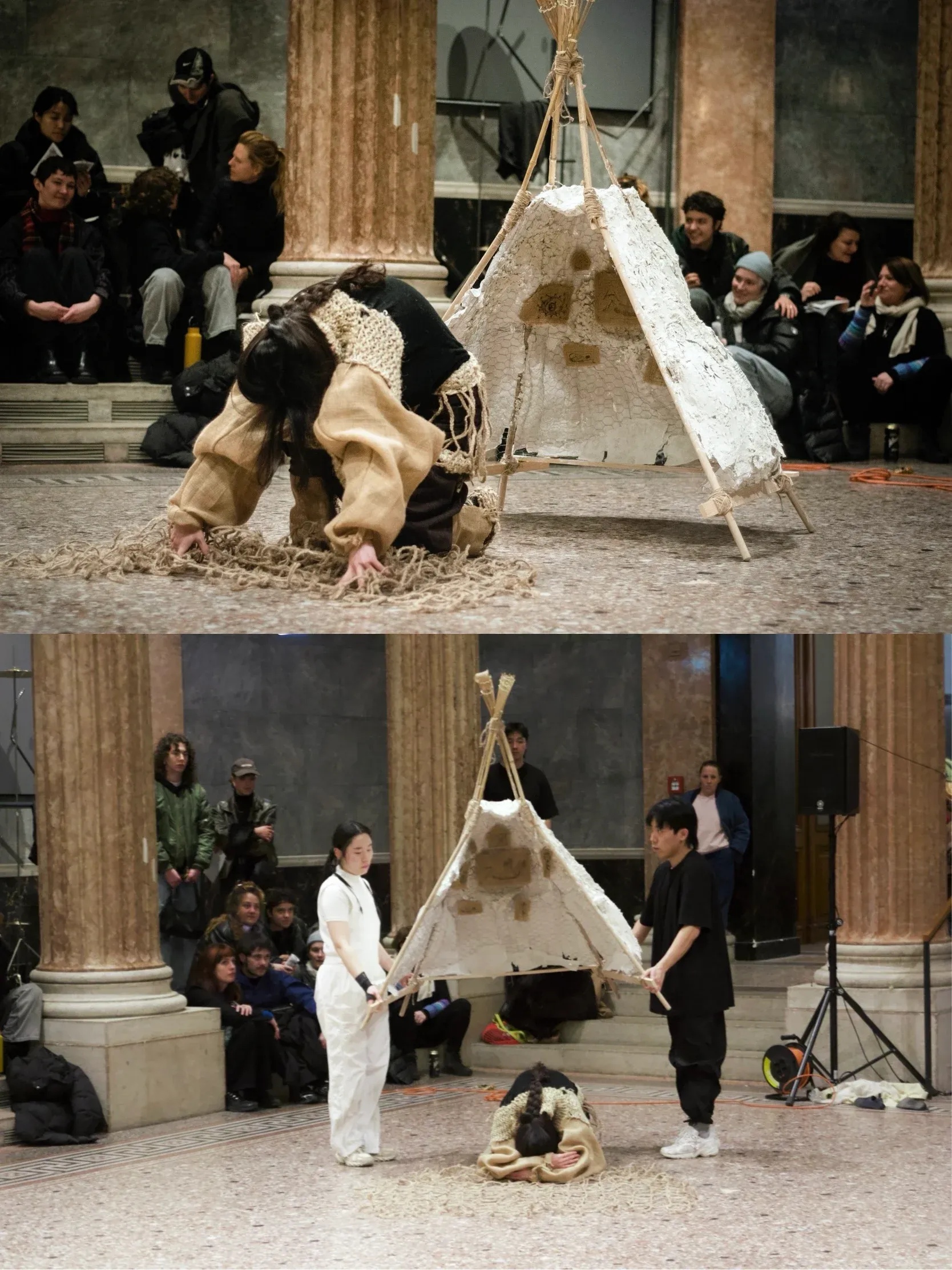
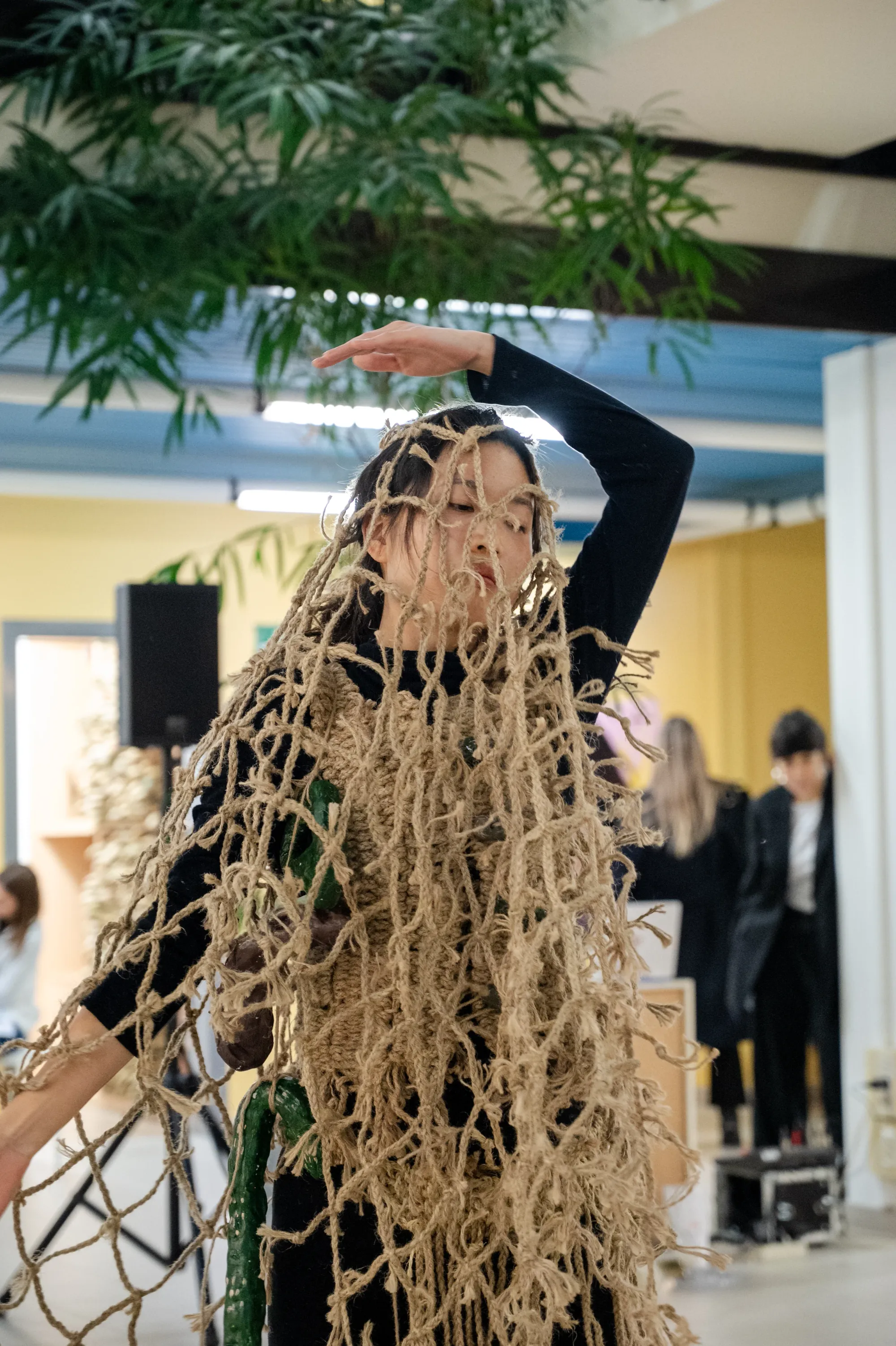
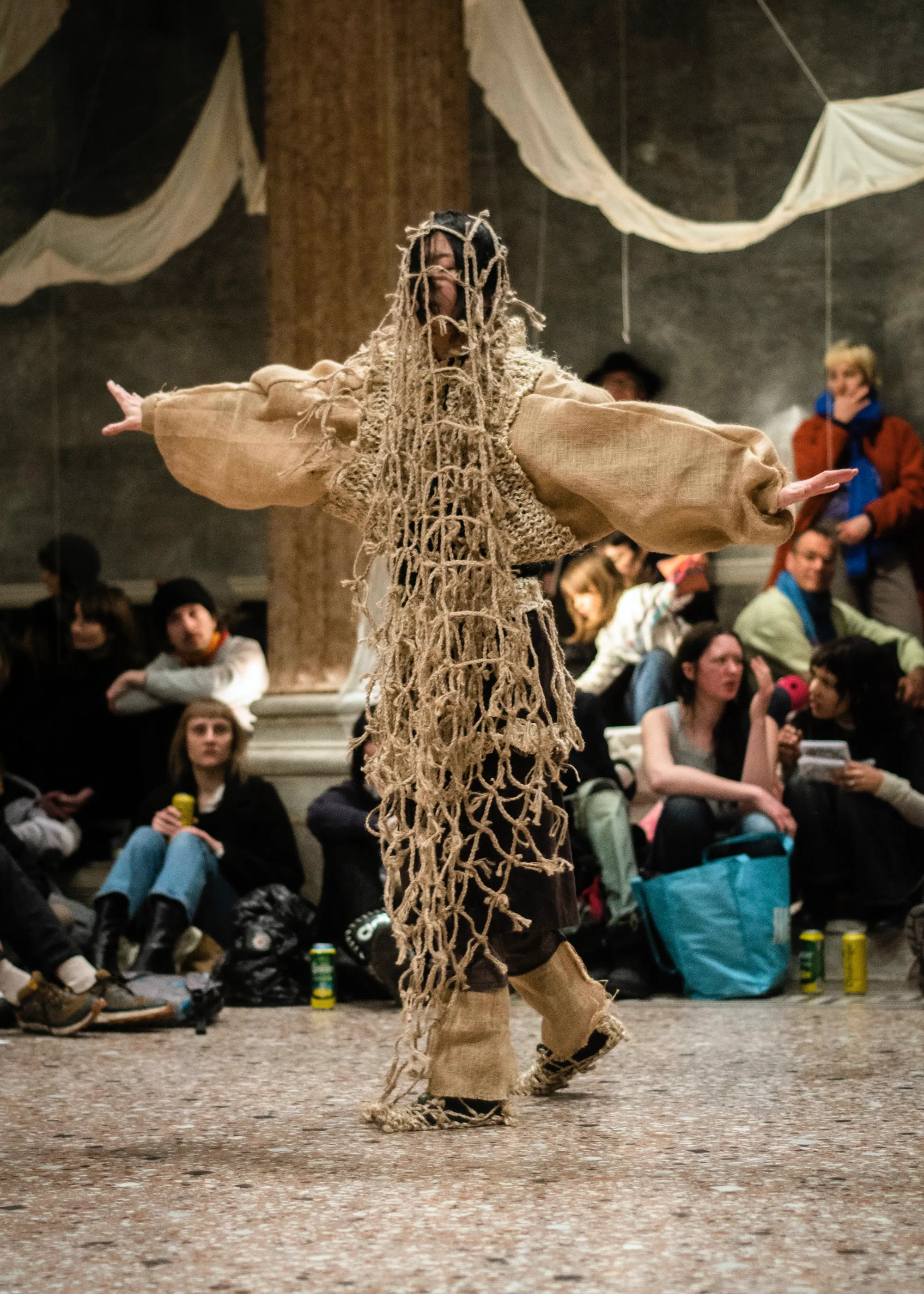
Seung-yeon Jung: Entwined Alien, 2025. Performance exploring identity, belonging, and the human condition through movement and sound. Performed at The Others Art Fair, Turin. Photo by Paolo Sbalzer. On the right Wave of Janggu at Schillerplatz. Photo by Rosa Knecht. Images courtesy of the artist.
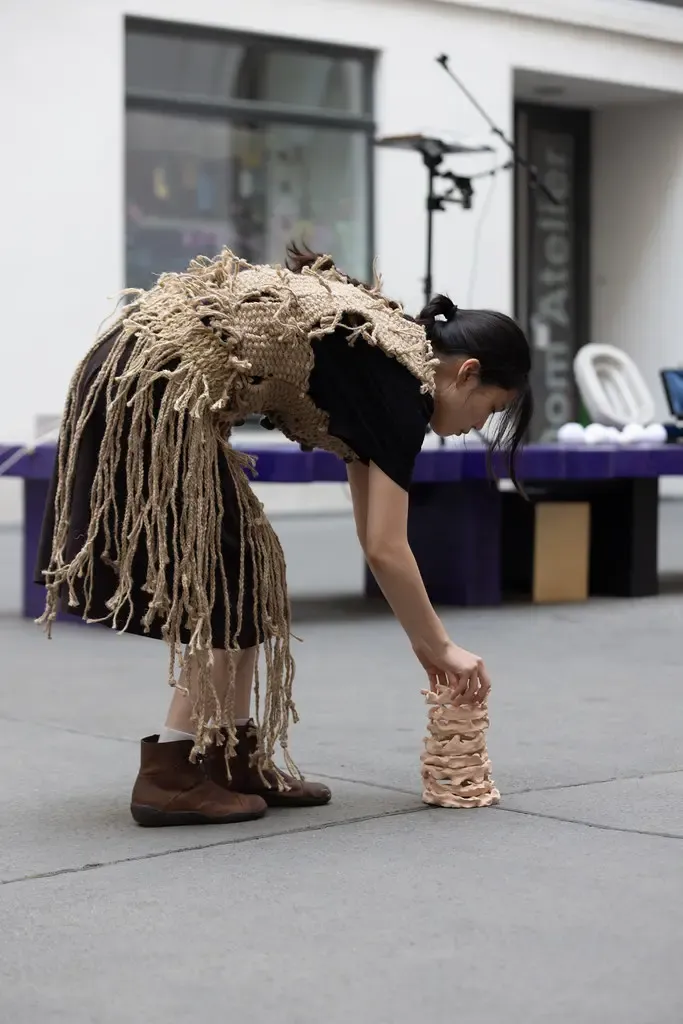
There is tenderness in her restraint. Jung reconstructs the struggle of identity quietly, through rhythm and gesture rather than spectacle.
Surfaces breathe, objects lean, colors fade as if acknowledging impermanence. Each piece suggests a slow reclamation of agency, a re-weaving of experience on her own terms.
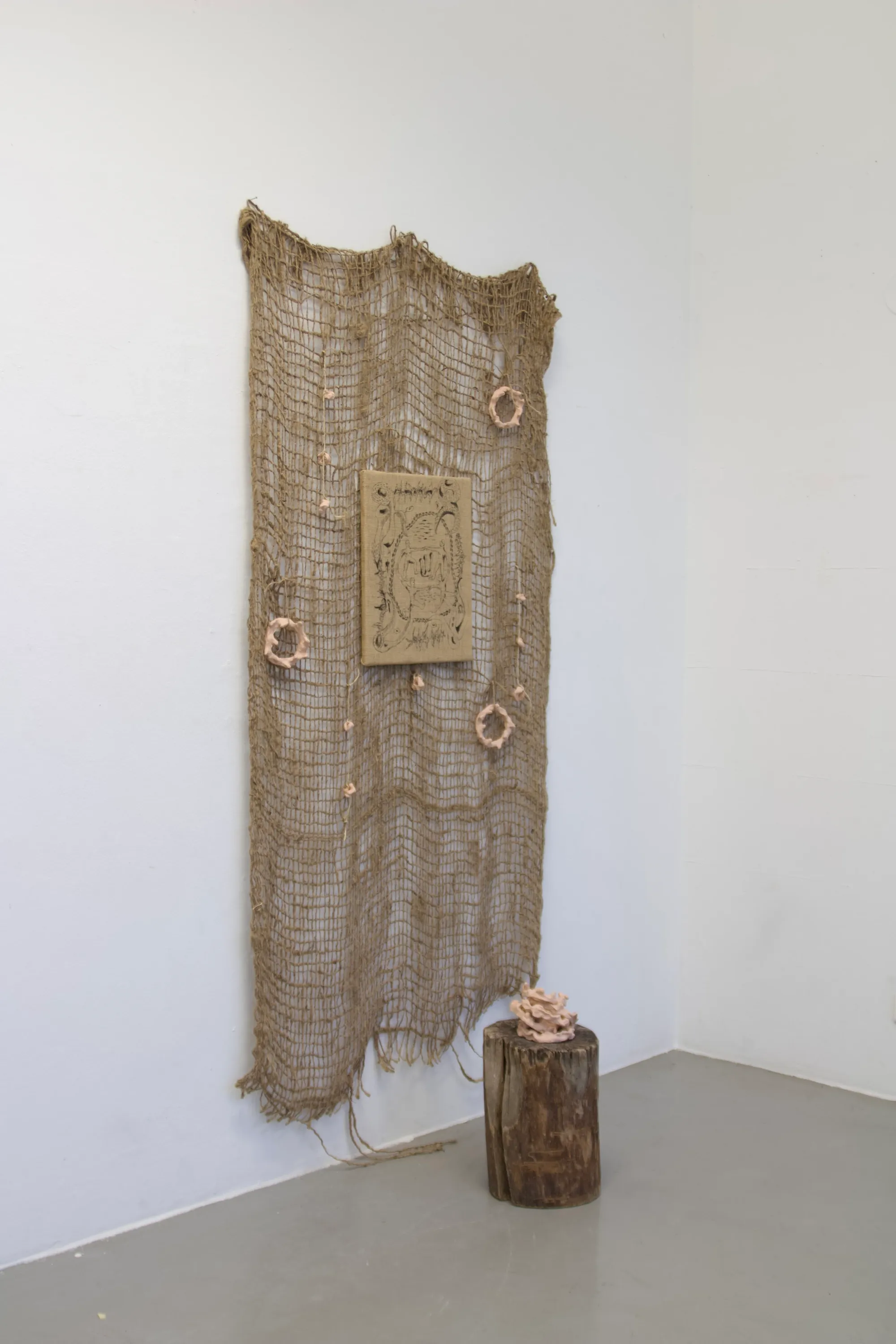
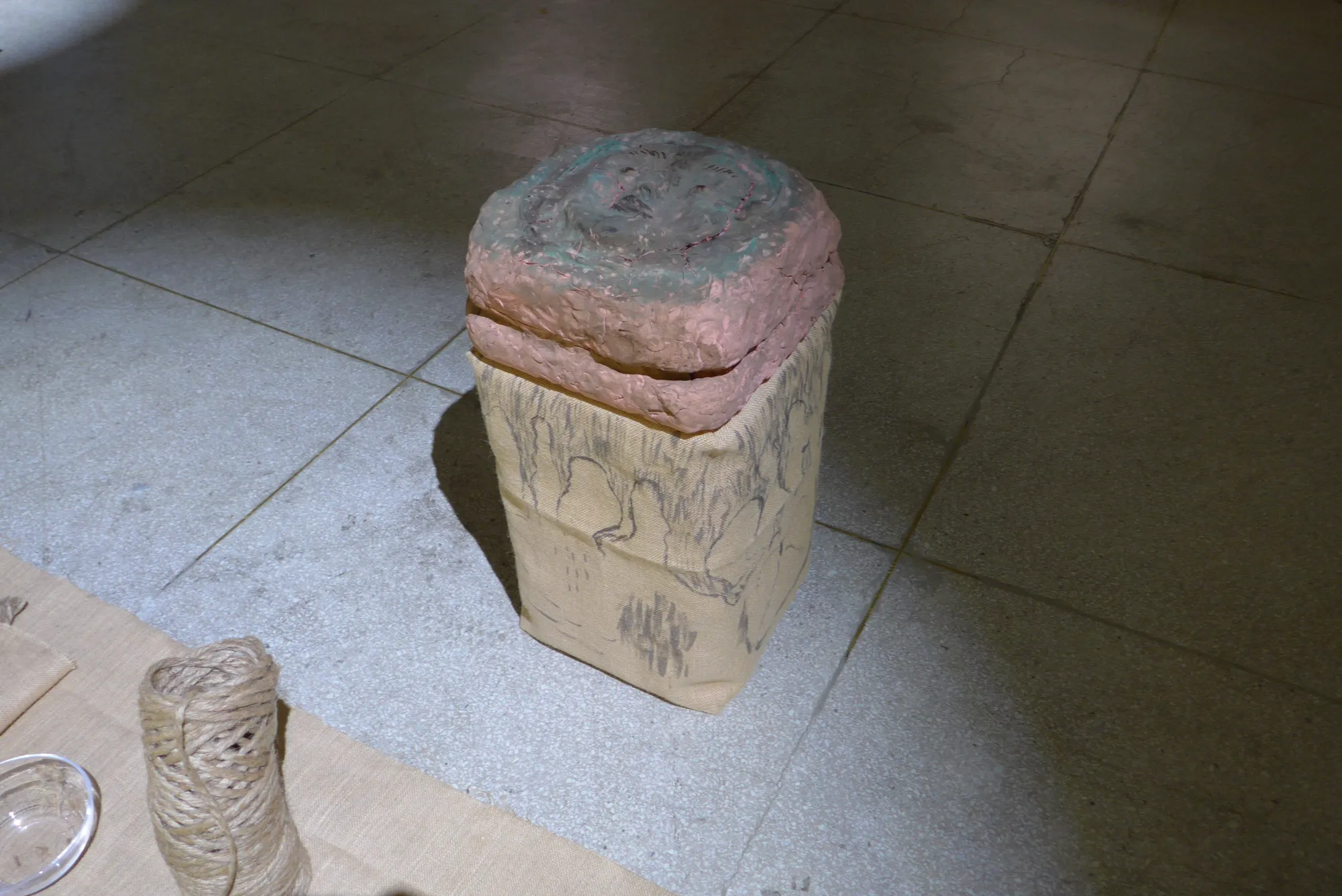
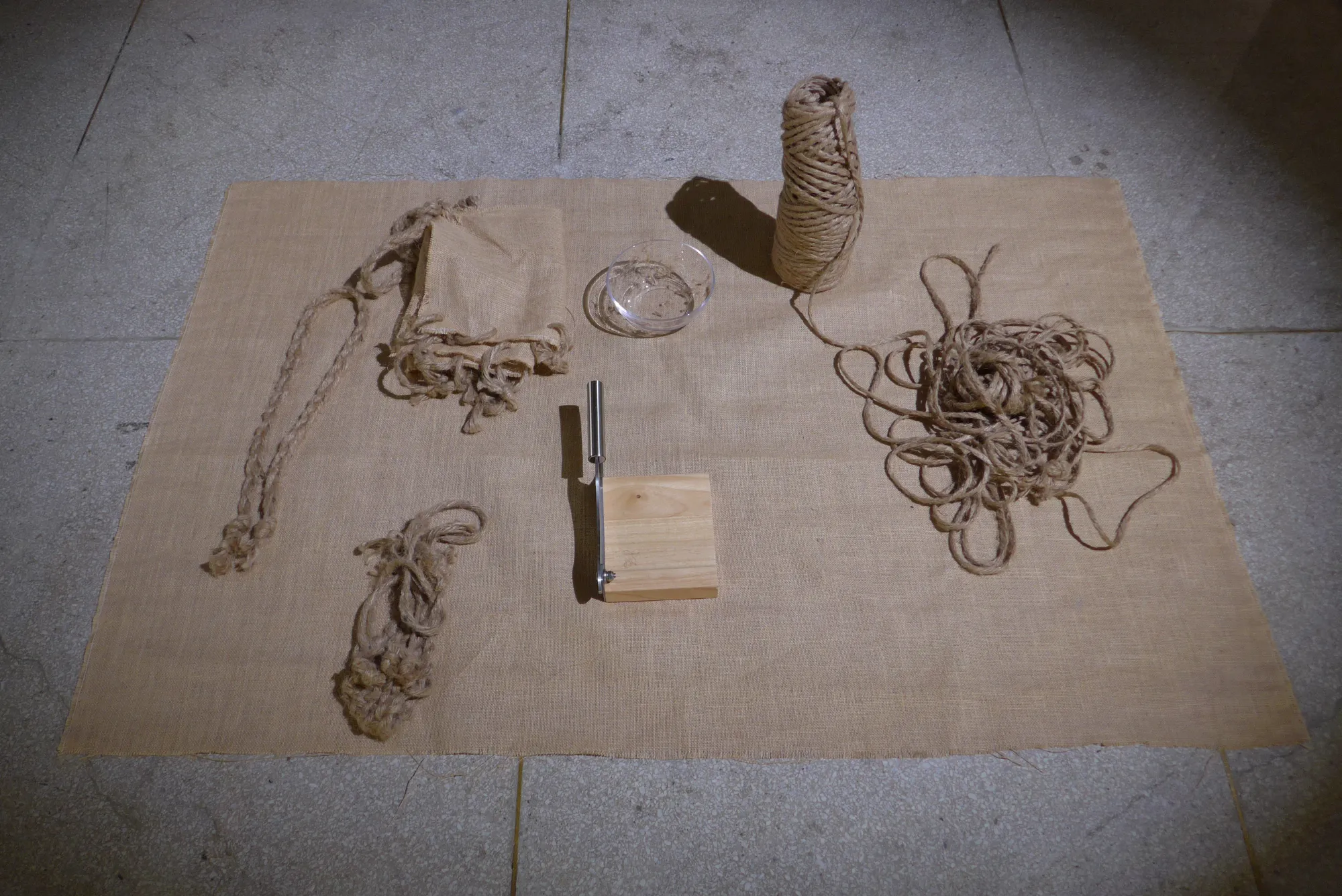
Seung-yeon Jung: installation view with sculptural and material elements exploring process, texture, and ritual. Images courtesy of the artist.
Cohabiting the Invisible
Jung’s art resists categorization. It is introspective yet collective, personal yet porous.
Her installations become environments of shared perception, places where the viewer’s own sense of displacement might surface.
Within them, the audience becomes part of a social choreography, moving, pausing, listening.
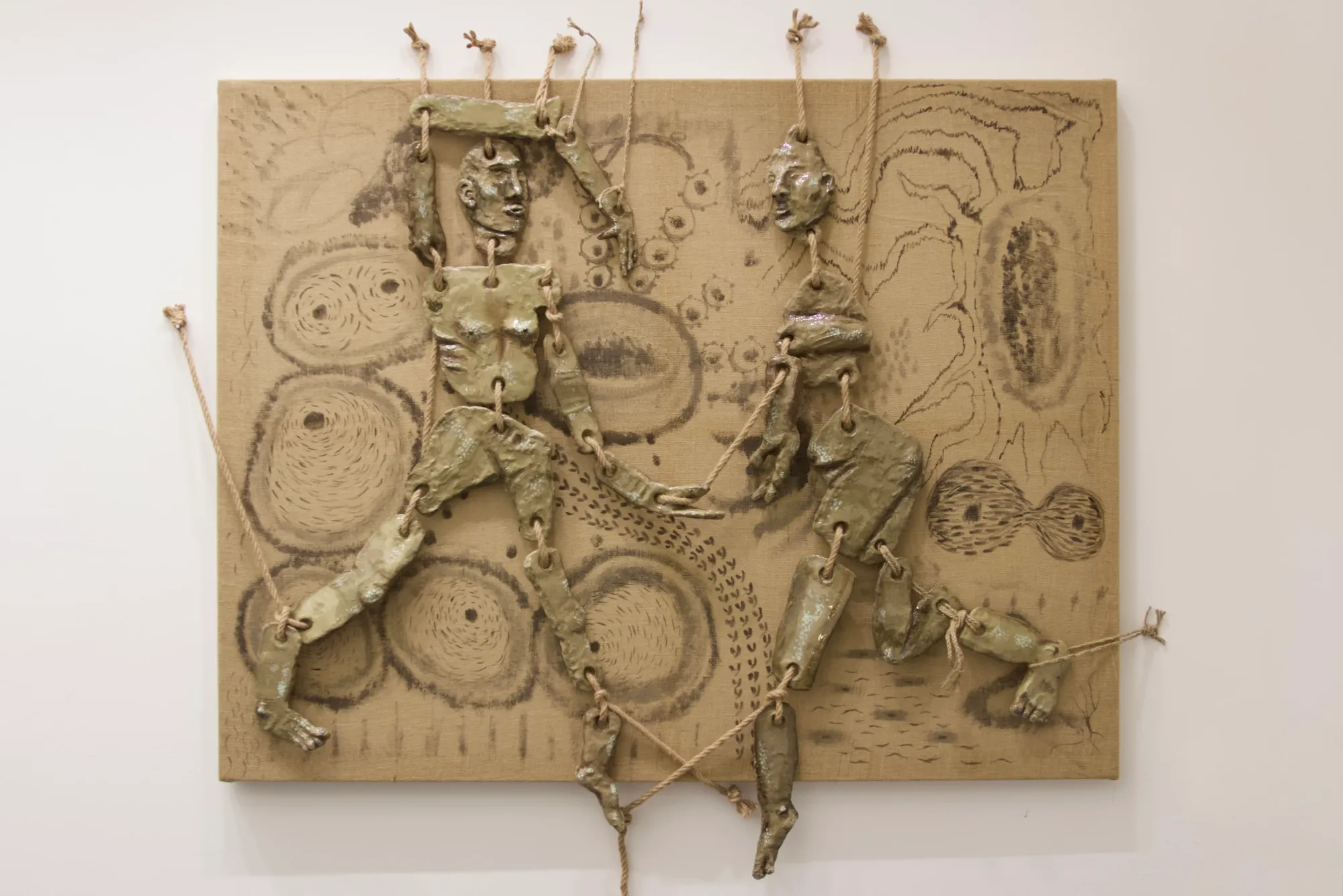
Her practice suggests that identity is not fixed but relational, shaped through coexistence.
In her work, belonging is not a destination but a method, one that must be practiced again and again.
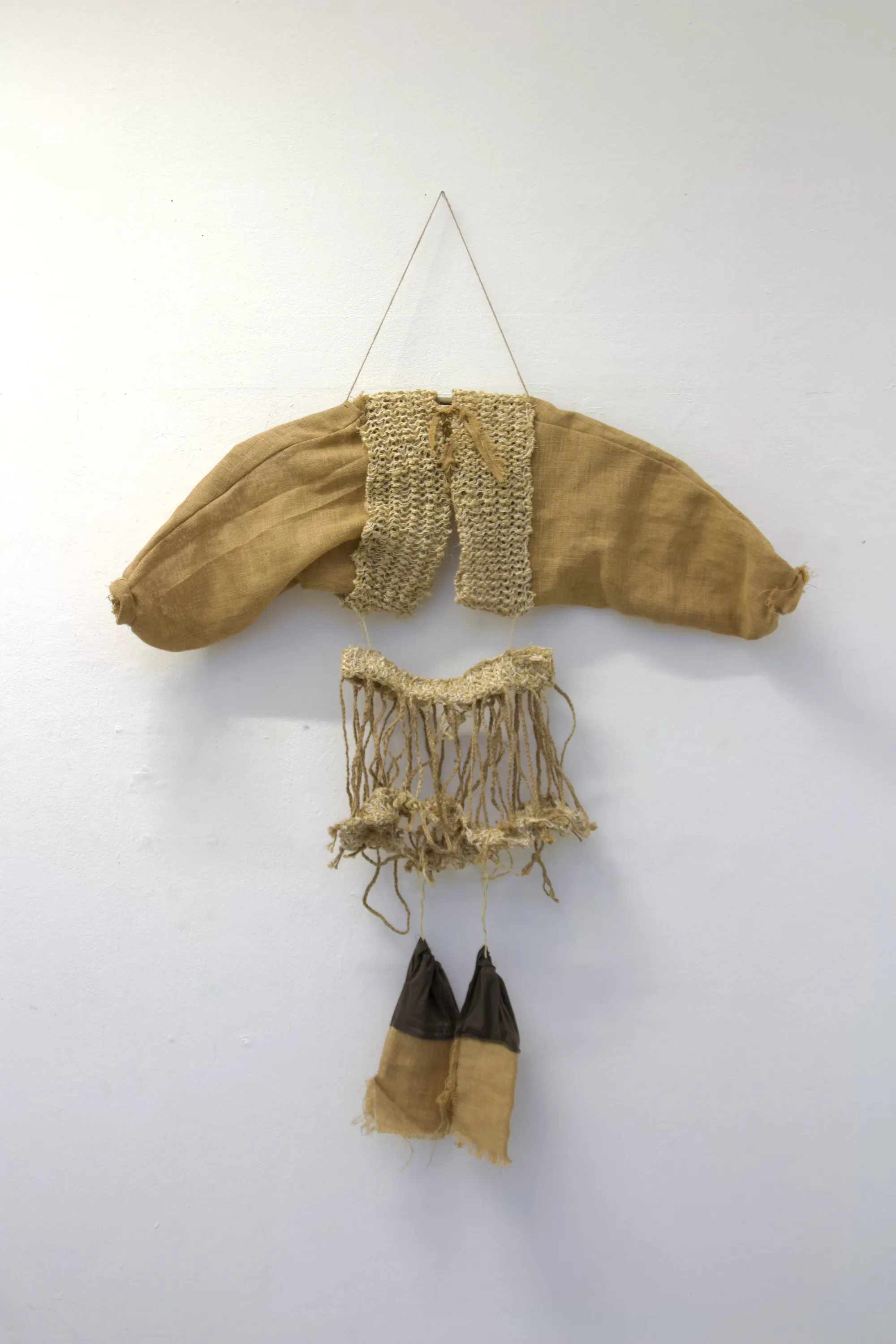
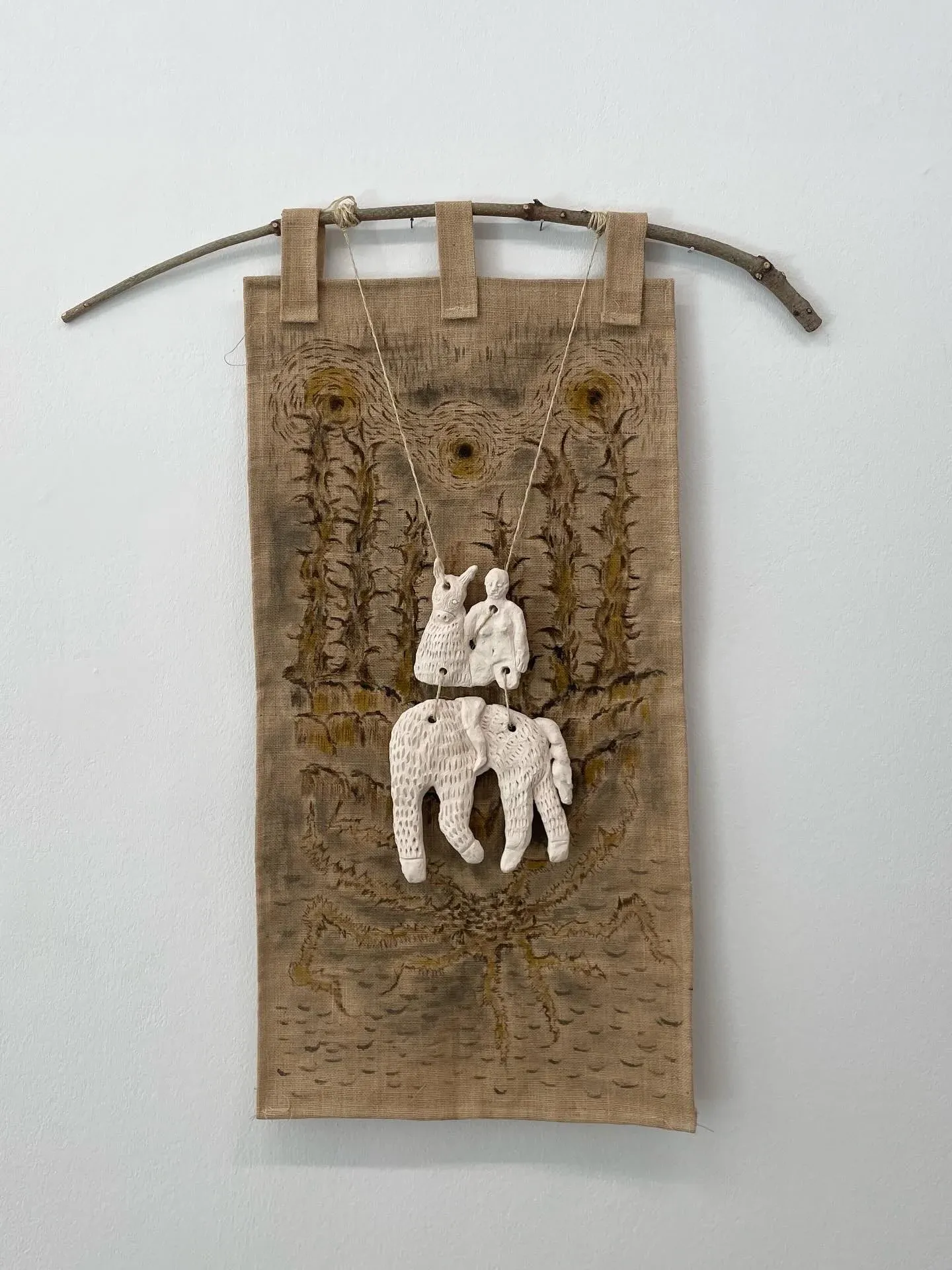
On the left: Alien costume II 2025. 140*130cm, jute twine, jute fabric and on the right: Communion, 2025. Ceramics, jute rope, wood, and ink on jute fabric, 108 × 51.5 cm. Images courtesy of the artist.
Why This Work Matters Now
Seung-yeon Jung belongs to a generation of artists negotiating mobility, technology, and cultural hybridity.
Yet her answer is quiet: to cultivate presence, to restore intimacy, to remind us that art can still be a site of relation.
Through her, painting becomes a living space, one that breathes with the viewer and speaks in the small language of proximity.
In a time defined by overstimulation, Jung’s work invites stillness. It asks for attention, not to the self as statement, but to the shared air between us.

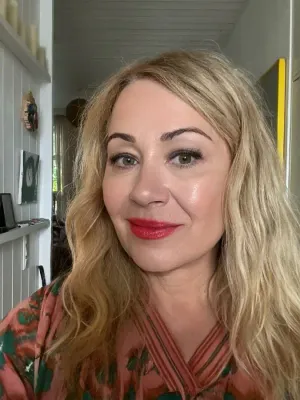
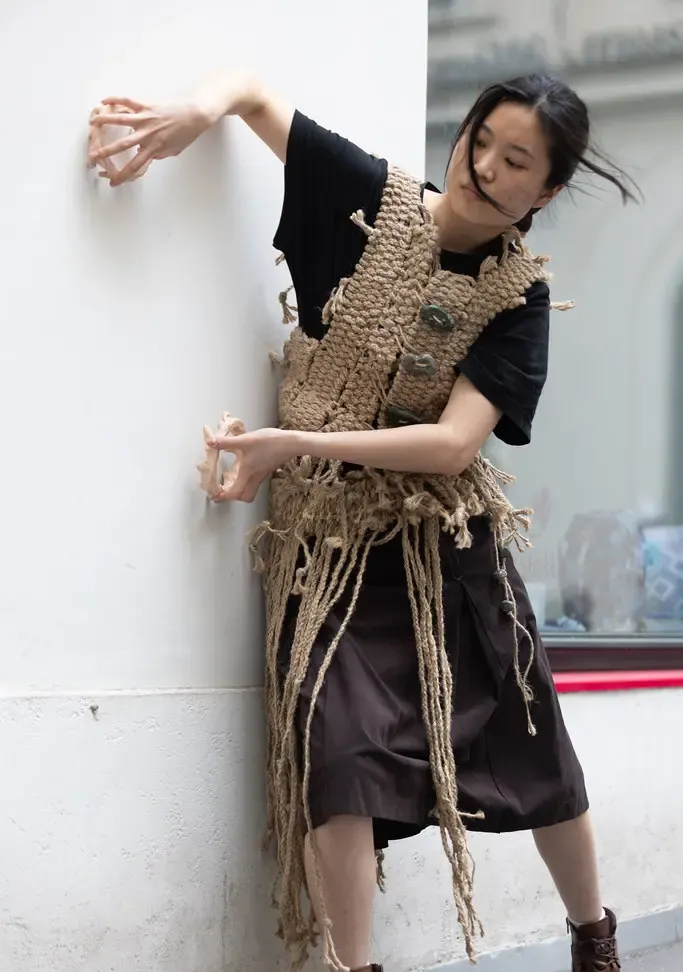
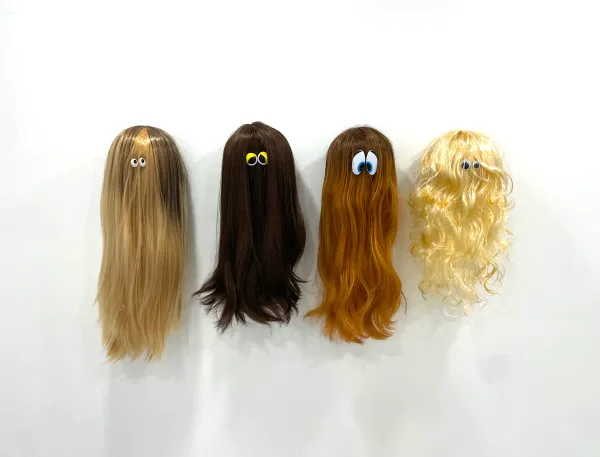
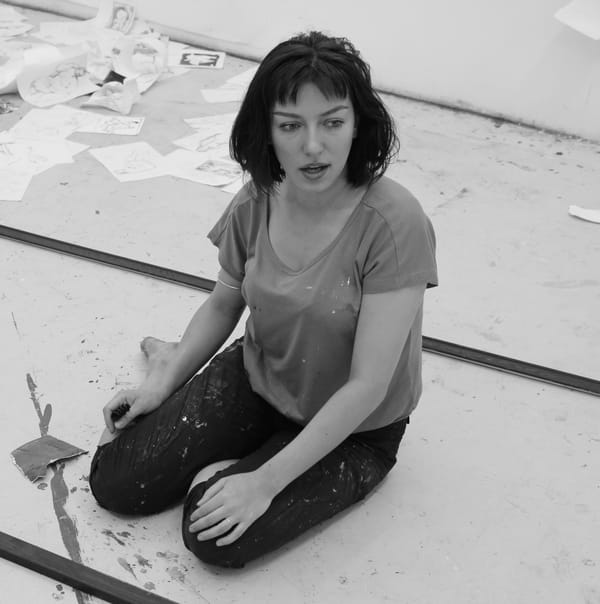
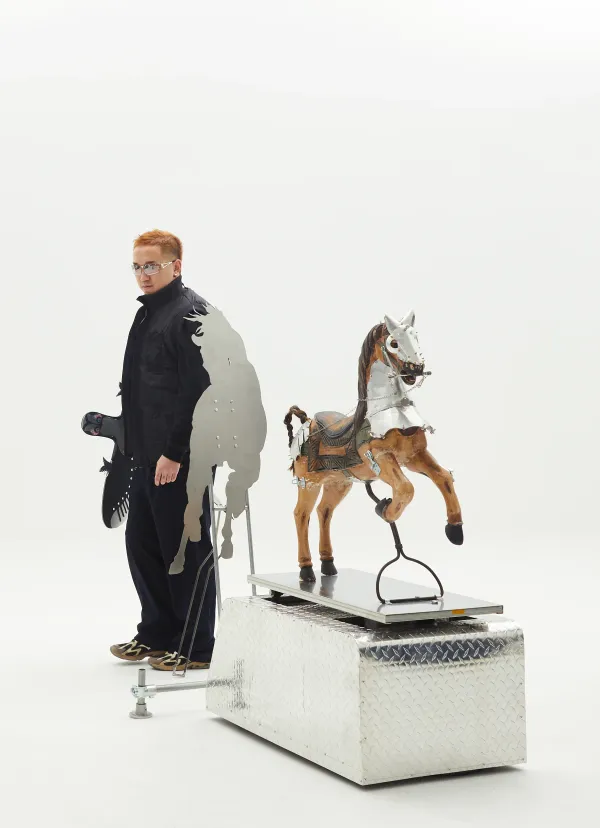

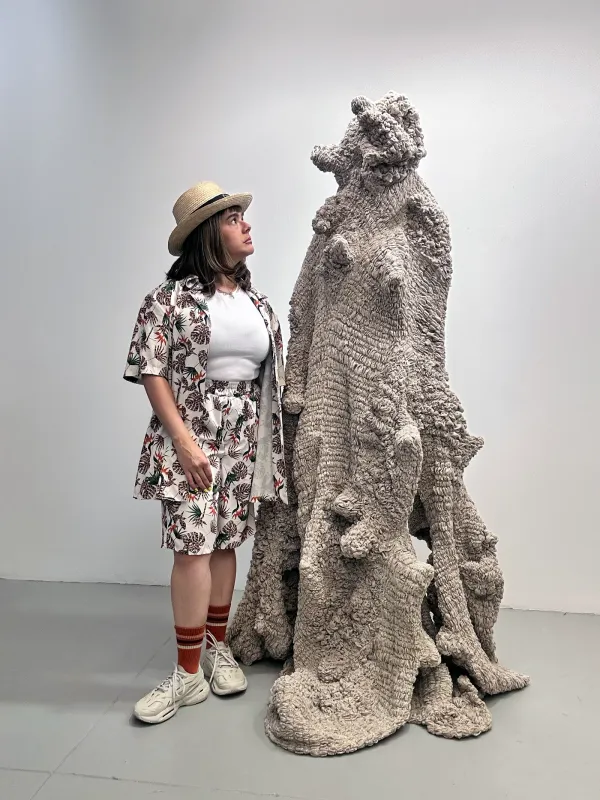
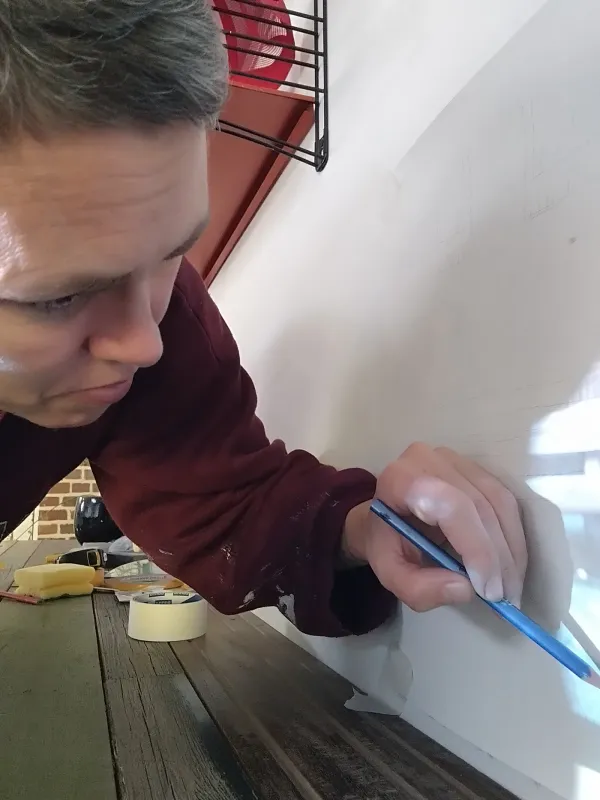
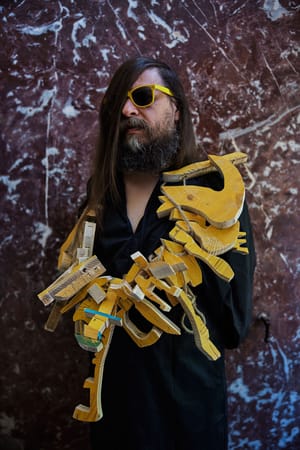
Member discussion